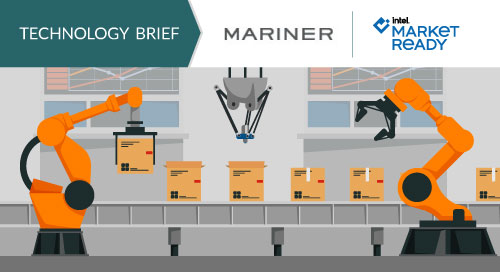A Guaranteed Model for Machine Learning

On the factory floor, wasted resources stack up fast for every real or imagined defect. When a good part is mistakenly labeled flawed, there’s lost time, efficiency, and machine effort. And when a defective part goes unnoticed and becomes the end customer’s problem? The potential consequences are even more severe.
Luckily, humans are expert defect detectors. But manual QA is slow, and automating it has been a challenge. Computer vision (CV) has the potential to match human accuracy, but it’s almost impossible to describe what’s immediately obvious to a person—say, the difference between a black mark and a piece of fuzz—in language a traditional CV system can understand.
Deep learning, where machines learn directly from people through labeled datasets, solves both problems. It raises the accuracy of CV to human standards while increasing efficiency and cutting costs. But to use it, manufacturers and SIs need solution providers who are experts in the technology and in its execution on the shop floor.
Machine Learning Starts with People
Mariner, a provider of technology solutions that leverage IoT, AI, and deep learning, knows that the people who will use and benefit from the solution must be involved from the start. That means a deep respect for the manufacturer’s experience on the provider’s part, and a commitment to collaborating with the people on the shop floor at every stage of deployment.
“First and foremost, you need to work with the customer to be sure you’re solving a real problem. Not just working on an AI science experiment because it’s cool,” says Peter Darragh, Executive Vice President of Product Engineering at Mariner. But the collaboration needs to be ongoing, not intermittent.
For example, Spyglass Visual Inspection (SVI) catches defects faster than expert human inspectors, and with equal or better accuracy, because those experts are the ones labeling the images used to train it. Darragh says it’s as if these inspectors had switched roles from athlete to coach.
“When they provide high-quality, labeled datasets that include all the nuances they see on the line every day, they’re no longer playing the game. They’re teaching the deep learning to play instead,” he says. And when something changes—a new customer has different quality standards, for example—the model can be retrained to adapt.
QA experts teach deep learning to play by providing high-quality, labeled datasets that include all the nuances they see on the production line. @MarinerLLC
Smart Partnership, Smart Factory
But understanding the technology isn’t enough. Providers also need to know how to deploy it in a real factory environment. “Lately we’ve seen huge interest in deep learning and an explosion of case studies,” Darragh explains. “But these projects tend to be done offline in a controlled lab environment.”
That’s why for the SVI solution, Mariner focused on automating a process to train and deliver models to the factory edge from the start. In this way, it can respond gracefully to all the inevitable changes in a typical production environment (Video 1).
To guarantee that SVI works well for every end customer (or their money back), Mariner follows a strict implementation process:
- Actively search for risks and validate that the problem is well suited for deep learning.
- Train the end customer on how to provide a series of high-quality labeled images.
- Use AI expertise to train a preliminary model from the initial set of images during a first consultation to confirm future operational success.
- Collaborate with the customer to mitigate any risks before agreeing on acceptance criteria.
- Continue to monitor model confidence after deployment, and assess the need for retraining.
A mix of carefully chosen tech elements make up the solution. It includes a containerized micro-service architecture at the edge in case network connectivity is lost. And Microsoft Azure offers a rich set of reliable cloud services that are easily scaled up and down.
“In fact, sometimes it’s as simple as moving a slider on the screen,” says Darragh, which allows Mariner to focus on the deep learning and model delivery process without concerns about infrastructure. And with Intel®-based processing, cost per inference at the edge can be significantly cheaper, delivering faster ROI.
AI Expertise Can Save a Manufacturer Millions
One leading glass manufacturer struggled to automate its QA process with a traditional machine vision system. A human could easily recognize the difference between a drop of water and an edge chip, even from an image. But it wasn’t possible to write a specification that its CV system could understand.
In the end, the best it could do was make the system overly sensitive, resulting in an unsatisfactory rate of false positives. So Mariner showed the QA experts how to train a deep-learning model with high-quality labeled datasets, and those false positives were eliminated.
After verifying the model’s accuracy, the manufacturer started running SVI on many lines—processing tens of thousands of parts a day. Now the solution automatically sends signals to the PLC to control the downstream process, and the product is accepted or discarded based solely on its determination.
As a result, the customer has reduced quarterly operating expenses by more than $1M, and plans to scale Spyglass Visual Inspection into other divisions serving four different markets, more proof that deep learning in the right hands, used to solve the right problems, is the key to reaping extensive rewards from machine vision applications.